Flower Glossary is reader-supported. When you buy through links on our site, we may earn an affiliate commission.
Table of Contents
1. Agapanthus africanus
The Agapanthus africanus is known as the African lily and is part of the Amaryllidaceae family. This plant can be grown within containers and pots and work best when grown indoors as such.
With medium care and watering requirements, this is a great choice for those who like to tend to their flowers and plants often. Blooming in the summer month, the clusters of blue and white flowers dangle from the bare stalks which can reach up to 24 inches.
Kept in sunny and partially shaded areas best, the African lily grows throughout the summer months making it a wonderful addition to those who love to show off a colorful garden.
2. Aloe succotrina
The Aloe succotrina, often referred to as the mountain aloe, is found in the mountains of the Western Cape.
A member of the Asphodelaceae family, the mountain aloe grows to just over 3 feet tall and is classed as a shrub. It can grow both singularly and in groups, making it a wonderful plant to choose for all space sizes in the garden.
The dead growth remains on the stems and acts as a protective shield while the plant grows red and orange flowers as well as spikes to provide even more protection.
3. Amaryllis belladonna
The Amaryllis belladonna, known as the belladonna lily, is a member of the Amaryllidaceae family and can be found in the Western Cape region.
It can be grown from both seeds and bulbs and thrives in rock gardens especially. The belladonna lily should be exposed to as much sunlight as possible to get the most growth from it.
The trumpet shape of the flowers grow on a stalk without leaves and remain there from the summer months to the start of fall.
A single stalk may contain up to 12 flowers that are a variety of shades of pink and white while leaves will grow on the stalk when the flowers have faded.
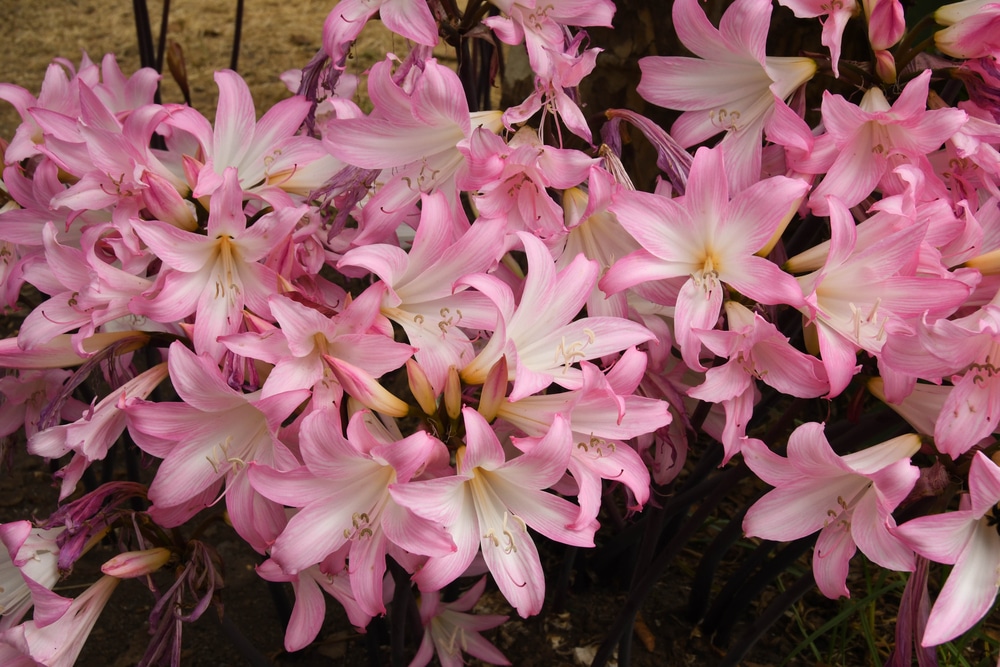
4. Ammocharis longifolia
The Ammocharis longifolia is known as the Malgas lily and is also a member of the Amaryllidaceae family and can grow from bulbs.
It grows best when planted in the full sun and can be found in the Northern and Western Capes. The flowers that bloom from the Malgas lily are found in shade of pink and white and have an aromatic fragrance that is ornate in appearance.
It requires a lot of care in the preparation as it needs to be in neutral or alkaline soil pH conditions while the soil should have a clay or sandy composition. Easy to maintain once planted, this plant looks wonderful both indoors and outdoors.
5. Bergeranthus scapiger
The Bergeranthus scapiger, known as the polvygie, is found in the Eastern Cape and is a member of the Aizoaceae family.
This plant is ideal as an indoor plant thanks to its small size and thick leaves that are shiny that produce yellow flowers. This plant is a succulent that can withstand droughts, making it a great choice for those who want a low maintenance selection.
They thrive best when planted within sandy or rocky areas so making sure they are properly prepped will save you any disappointment while they are growing.
6. Berkheya purpurea
The Berkheya purpurea, known as the purple Berkheya, is native to South Africa and is a member of the Asteraceae family.
This perennial flowering plant is supported by a long taproot which is found on the sides of mountains and waterways in higher altitudes.
This plant has thistle foliage that is found at its base that enwraps the earth with thick branches. A tall stem grows from the center which is covered in thorns where flower buds bloom and are protected by the spikes.
The flowers, as expected, are varying shades of purple including violet, lilac and plum.
7. Clivia miniata
The Clivia miniata, referred to as the yellow bush lily, originates from various southern Africa including Mpumalanga, KwaZulu-Natal and the Eastern Cape.
This perennial plant sprouts from a bulb or rhizome and is extremely low maintenance which makes it ideal for those who don’t wish to fuss over their plants.
When planted in loamy soil, this plant will bloom at its best and the flowers that blossom are cream, yellow and orange. The flowers will bloom during the spring and summer months, making it perfect for those who want a colorful garden during hot, summer days.
8. Crocosmia ‘Emberglow’
The Crocosmia ’Emberglow’, known as montbretia, can be found in the savanna regions in South Africa and grows from corms and bulbs. A member of the Iridaceae family, this plant has a great aesthetic impact when planted in clusters.
It needs to be watered regularly as the soil needs to remain rich in nutrients while still maintaining ample drainage. The red and yellow flowers are tube shaped and fall from stems that are full of lance shaped leafage.
The flowers bloom during the late summer months and bring a warm look to any garden, making it appear very striking.
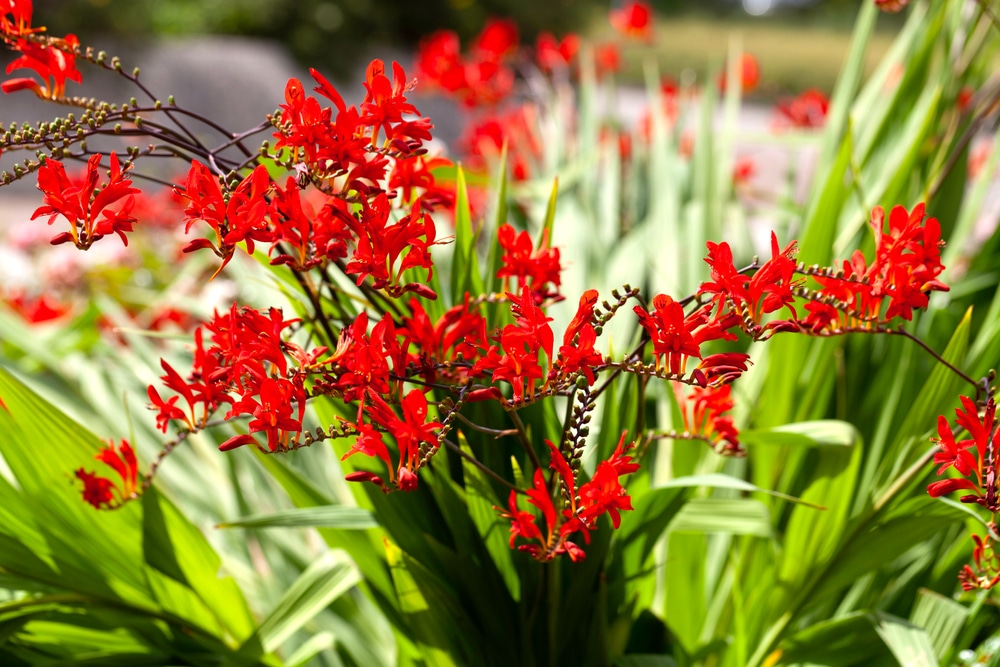
9. Dimorphotheca pluvialis
The Dimorphotheca pluvialis is a member of the Asteraceae family and are akin to daisies and sunflowers. They are often called the rain daisy and are grown from seeds, contributing to many colorful displays in containers.
The flowers bloom constantly through the summer and fall months and are white in color.
They do require regular maintenance and water but can be planted indoors or outdoors in containers making them versatile but they do thrive better when kept outdoors.
10. Dimorphotheca tragus
The Dimorphotheca tragus is known as the Cape marigold and is native to the Northern and Western Cape regions in South Africa.
This perennial plant is easy to grow and maintain as it requires a lot of sunlight which does most of the work. Blooming flowers that are orange, purple, white and yellow in color with a purple center, the Cape marigold is a wonderful choice when planted in bulk.
As it is drought resistant, it is perfect for those who don’t want to spend their time worrying about watering their plants on a regular basis.
11. Eucomis comosa
The Eucomis comosa, known as the slender pineapple flower plant, is known for its sweet scent and is a member of the Hyacinthaceae family.
Found in the Eastern Cape and KwaZulu-Natal regions, this plant grows from a bulb and must be kept in as much sunlight as possible. It can be kept in a container and grows the most during the warmer months.
The flowers that bloom vary between white, cream and purple and the shape of the flower arches resembles a pineapple, hence its name.
The foliage itself has a rich green tone and is spear shaped in appearance with a purple hue found underneath, making it a beautifully vibrant plant.
12. Freesia leichtlinii
The Freesia leichtlinii is known as the white freesia and is a member of the Iridaceae family. Located at the Western Cape, this plant should be kept in full sun or partially shaded conditions and can grow in containers with ease.
Incredibly low maintenance, this plant grows quickly and easily as it mainly relies on the sun. The leaves are lance shaped but what makes them unique is that they grow erect while the cone shaped flowers grow on spikes at the same height of the leaves.
The flowers are colored white but have a lavender tint underneath.
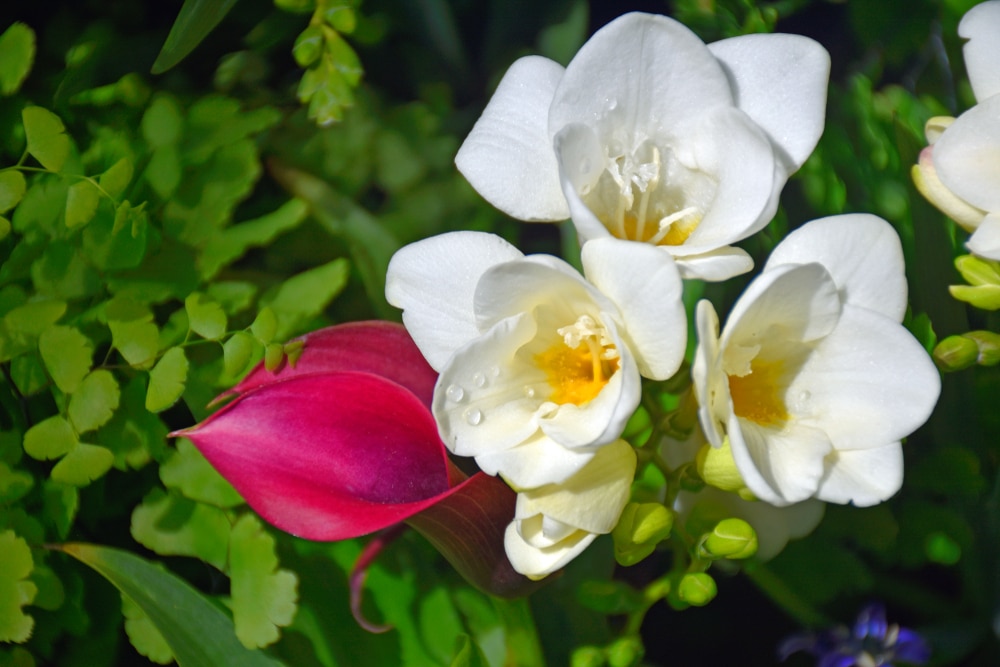
13. Gazania rigens
The Gazania rigens, also known as the treasure flower, is a member of the Asteraceae family and is native to South Africa.
This plant requires a moderate amount of maintenance and watering and should be planted in a space that has as much sunlight as possible. These plants can grow perennially or annually depending on the area where you live.
The treasure flower boasts vine-like stems that grow along the ground and features blade shaped leaves. The flowers bloom on the stems and can reach up to 10 inches in height. They are orange in color and have brown or black centers.
14. Geissorhiza tulbaghensis
The Geissorhiza tulbaghensis which is referred to as the Tulbagh satin flower, is found in the Western Cape region of South Africa and is a member of the Iridaceae family.
It thrives when growing from a bulb or corm and does well in rocky gardens or potted. With low maintenance and care required, this is an easy plant to grow and is ideal for all kinds of gardeners, especially those who are at the start of their gardening journey.
The flowers that bloom are cupped shaped and come in shades of white, purple and brown. Blooming during the winter and spring months, this is a great plant for those who want colorful plants all year round.
15. Lapeirousia pyramidalis
The Lapeirousia pyramidalis, also known as the painted petals, originates in South Africa and belongs to the Iridaceae family. This plant thrives best in desert-like environments so making sure that it is kept directly in sunlight is a must.
They have a distinctive appearance and sweet scent. With the flowers that bloom ranging from lavender to white with purple hues, the painted petals are ideal for an array of gardens and can be planted in pots and containers where there is plenty of access to sunlight.
Using corms in the growing process will see the plant thrive at its best. It will need watering a couple of times a week to ensure that it gets the most out of its growth and it can take more than one season for it to sprout which therefore requires patience.
16. Leonotis leonurus
The Leonotis leonurus, known as the lion’s tail, is a member of the Lamiaceae family and is resistant to droughts and can withstand frost.
This perennial plant flowers at various times of the year making it great for those who like to garden all year round. The maintenance and care are relatively easy compared to other members of the mint family.
The colorful display with the tassel shaped flowers that range in shades of cream, white, orange and yellow, make it a very popular choice for those who like to fill their garden with lots of colors.
As well as its striking appearance, the lion’s tail can be used for medical applications to help with conditions such as asthma, headaches and fevers and is safe to consume as well.
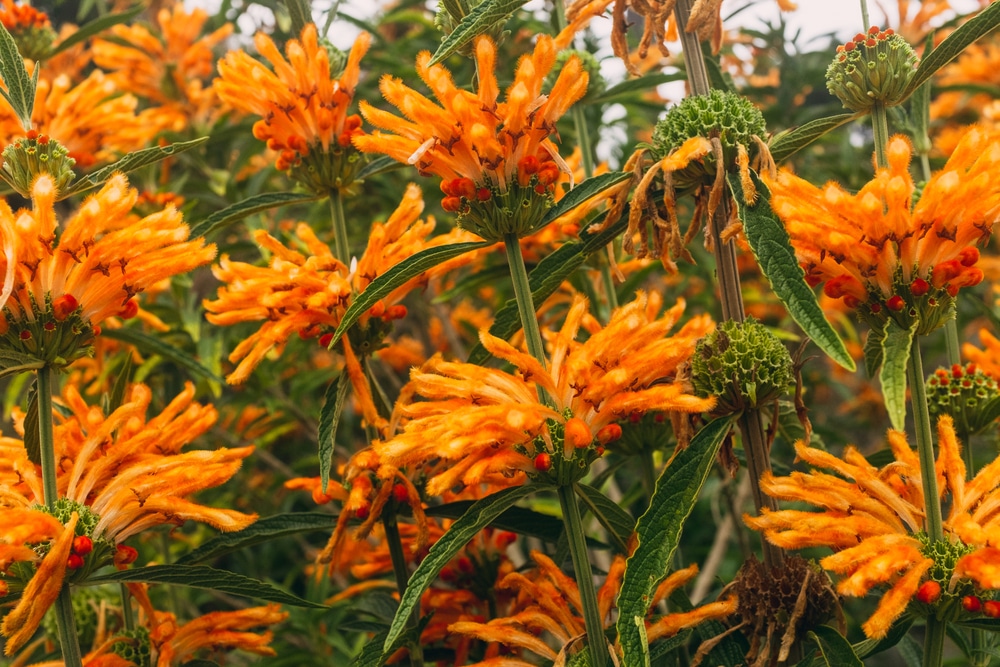
17. Leucospermum gueinzii
The Leucospermum gueinzii, also known as the kloof pincushion, is part of the Proteaceae family and native within southern regions of Africa.
It needs to be planted within fully sunny locations in the garden and requires some maintenance. The oval shaped flower head blooms numerous flowers on the upper part of the leaves which gives the plant its pincushion effect.
With the flowers varying in shades of orange, yellow and red, this plant is ideal for those who want plants that look vibrant in the summer months.
The leaves are unique as they are a deep green and have red teeth along the edges which gives the plant a quirky appearance.
18. Oxalis hirta
The Oxalis hirta, also known as the hairy oxalis, is native to the Western Cape and grows from a bulb within loamy or sandy soil.
It can be planted within sunny or partially sunny locations, making it a great choice for all kinds of gardens.
The soil’s pH levels need to be neutral or acidic in order to maintain its growth in the best way. The flowers that bloom are often a reddish purple shade that grow on stems with a variety of branches.
19. Paranomus longicaulis
The Paranomus longicaulis, known as the woolly scepter plant, is a shrub that belongs to the Proteaceae family.
Native to the Western Cape and found within sandy soils, this plant blooms during the spring and summer months. This shrub grows quickly, especially when planted within containers or natural settings.
The branches are attached to a thick stem which holds spoon shaped leaves that are located at the top of the stem. With bottlebrush shaped flowers that range in pinks, browns or whites, this plant is a wonderful choice for those who like a variety of colors in their garden.
20. Pelargonium album
The Pelargonium album, also known as the Pilgrim’s Rest Pelargonium, is found in the Mpumalanga region in southern Africa.
A member of the Geraniaceae family, this plant has a signature fragrance that is akin to apple and mint. The pale green foliage will suit all kinds of garden spaces while the maintenance is incredibly easy.
To get the most from this plant, it is best to grow it in loamy soil that is rich with a neutral pH and should be planted within the shade. The flowers that bloom are white and grow during the winter months through to the summer.
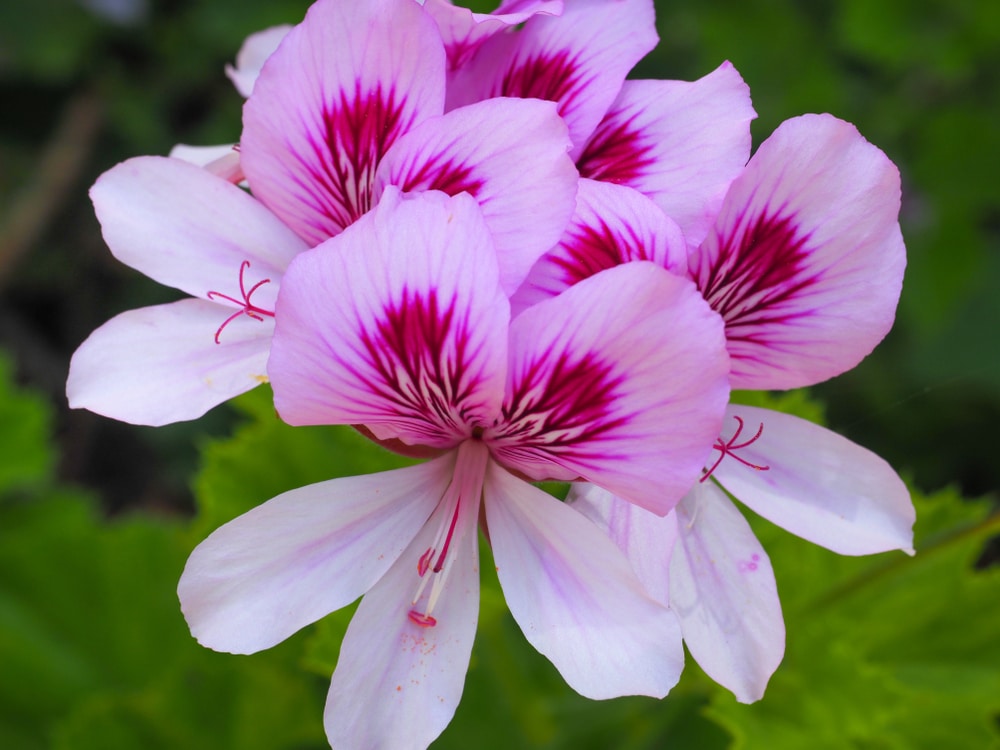
21. Pelargonium cucullatum
The Pelargonium cucullatum is a shrub that is known as the hooded leaf pelargonium which blooms flowers that are pink, purple or red making them a choice for those who like a richer color scheme for their garden.
The stems have a hairy texture which gives them a quirky appearance but it is their trademark scent that makes them instantly identifiable.
For those who are wanting to grow plants that have medicinal properties. This plant can be used as a natural pink coloring when baking as well as added to teas to treat issues with the stomach.
22. Protea cynaroides
The Protea cynaroides is regarded as South Africa’s national flower and is part of the Proteaceae family. This plant grows to around 4 feet and blooms large flowers that have dome shaped heads.
The flowers can range between white, red and pink and work well as prized cut flowers especially as they dry well for arrangements.
The leaves mature into a dark green color with a waxy and shiny finish which makes them ideal for those who want a lavish looking plant for a larger space in the garden.
23. Streptocarpus dunnii
The Streptocarpus dunnii, also known as the red nodding bells, is native to the southern African region of Mpumalanga and is a member of the Gesneriaceae family.
This perennial plant grows only one leaf throughout its lifespan and doesn’t flower for many years at a time.
When it blooms, the flower is red or orange and grows to a trumpet shape that produces seed pods during the summer months. The flowering process marks the end of this plant’s life cycle.
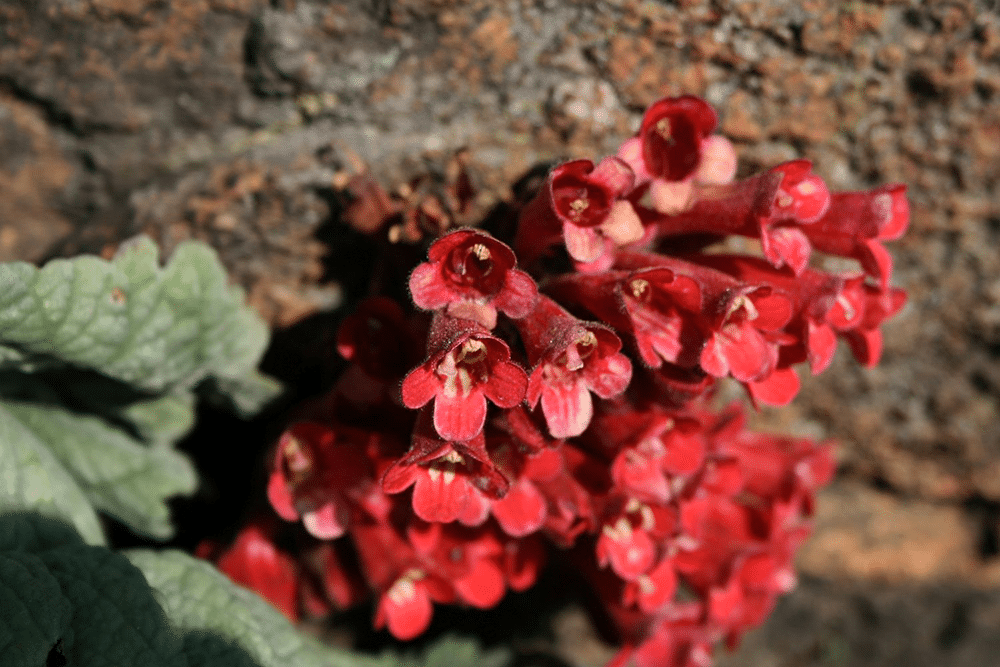
Image from: File:Streptocarpus dunnii 2.jpg – Wikimedia Commons
Conclusion
In conclusion, there are plenty of options to suit whatever your needs are. Whether you want a plant purely for aesthetic reasons or one that produces fruit, African plants are a great place to start if you are looking for new, exotic plants to grow.
Whether you have a specific country or region in mind, Africa is a continent filled with a lot of plants that cannot be found anywhere else on earth. Take your time to familiarize yourself with the various properties of each plant before making your final decision.